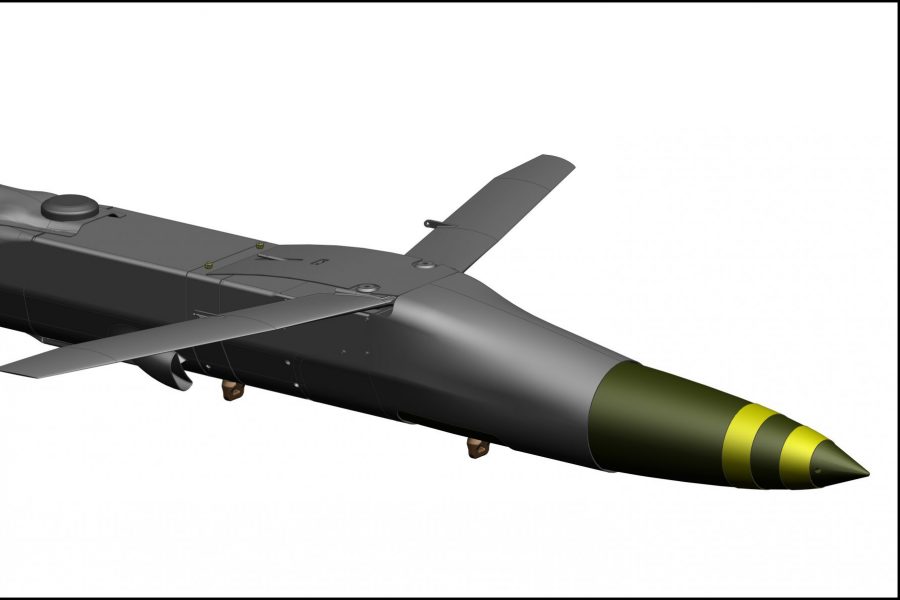ORLANDO, Fla.—Boeing is developing a long-range version of its Joint Direct Attack Munition called the Powered JDAM, adding an engine to extend its range by 20 times over the conventional glide version of the weapon, company officials said.
The new weapon combines a 500-pound warhead, a wing kit, and a propulsion module into the same form factor as a 2,000-pound bomb. Once fully developed, the weapon would offer a lower-cost alternative to cruise missiles for stand-off attack, adapting a conventional bomb for attacking targets in a contested battlespace.
“The objective of powered JDAM is to take the proven JDAM and make that effective in anti-access, area denial environments, so it has the range to stand outside of that engagement zone,” said Wade Kirkbride, a senior marketing representative for the company. That means “you can make your platform more survivable and still deliver combat power inside of those areas.”
Boeing is trying to build out its weapons portfolio by adding capabilities to existing products. The company has sold more than 430,000 JDAMs to date. “This is the centerpiece of our [plan] to evolve JDAM for the future,” he said.
The weapon could be adaptable to different uses, said Jim Leary, Boeing’s director of sales for missiles and weapons systems. By building with existing components developed for other products, Boeing argues it can offer the weapon at a lower cost, he said. The result is a weapon that will cost more than a standard JDAM but still a fraction of the cost of competitive weapons with similar range, such as cruise missiles.
The system could also be used as a decoy, intended to draw anti-aircraft or anti-missile fire. “So if you can get your enemy to fire a $1 million weapon to destroy this, a much-lower-cost weapon, that’s a win,” Kirkbride said, adding that the system has room to add additional capabilities should the Air Force see other ways to use the weapon. “You can use different types of warheads—there are a lot of different warheads you can fit in the Mark 82 form factor—and then you can swap out different types of seekers, sensors, data links, as needed. It’s very flexible.”


